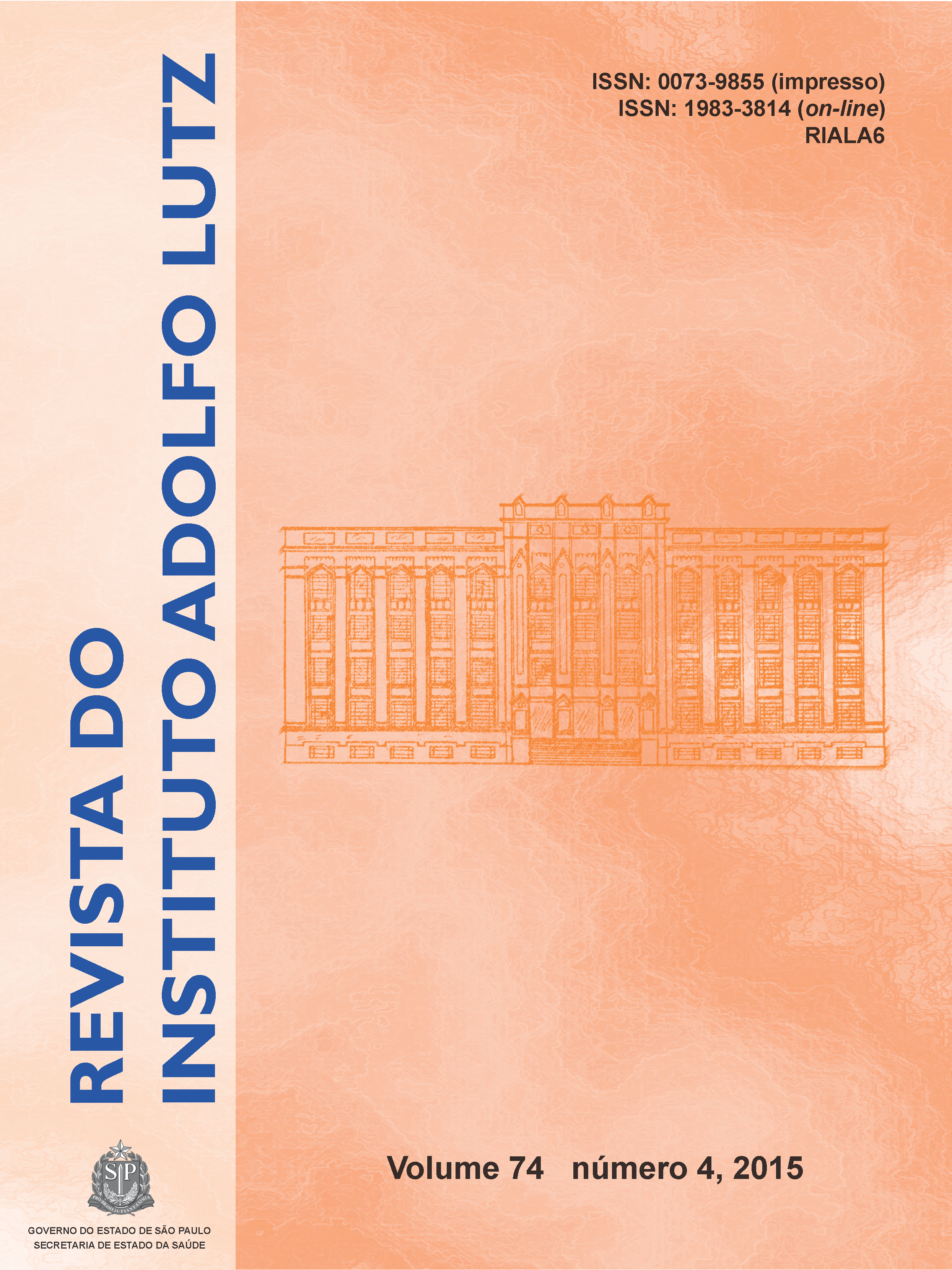Detection of Leishmania (Viannia) braziliensis by PCR in samples collected by scraping the lesion edges from patients of an endemic area
Keywords:
American cutaneous leishmaniasis, Leishmania (Viannia) braziliensis, PCR
Abstract
American cutaneous leishmaniasis (ACL) is an infectious disease caused by Leishmania. Their diagnosis is performed in samples collected from the lesion biopsies, which has to be performed by physicians. For simplifying the sample collection, this study proposes a minimally invasive procedure, by scraping the lesion edges. Laboratory diagnosis by PCR was performed and compared with the microscopic examination, by analyzing 28 samples collected from patients with suspicion of ACL. Sample collected from the lesion edge with a sterile toothpick was divided into two aliquots. One aliquot was analyzed under direct microscopy, and the second by PCR, by using two primer pairs (one for Leishmania genus and other for L. (V.) braziliensis). Of 28 samples, 27 (96.43 %) showed concordant results in both methodologies (eight positive and 20 negative). The PCR methodology is an invaluable tool: (i) to determine the Leishmania species; (ii) to provide an alternative procedure of sample collection, when an authorized professional is not available in the respective health service;and (iii) to propose a minimally invasive procedure for collecting biological material.
Published
2016-08-26
How to Cite
Gomes, A. H. de S., Armelin, I. M., & Pereira-Chioccola, V. L. (2016). Detection of Leishmania (Viannia) braziliensis by PCR in samples collected by scraping the lesion edges from patients of an endemic area. Revista Do Instituto Adolfo Lutz, 74(4), 437-441. Retrieved from https://periodicoshomolog.saude.sp.gov.br/index.php/RIAL/article/view/33497
Issue
Section
BRIEF COMMUNICATION










